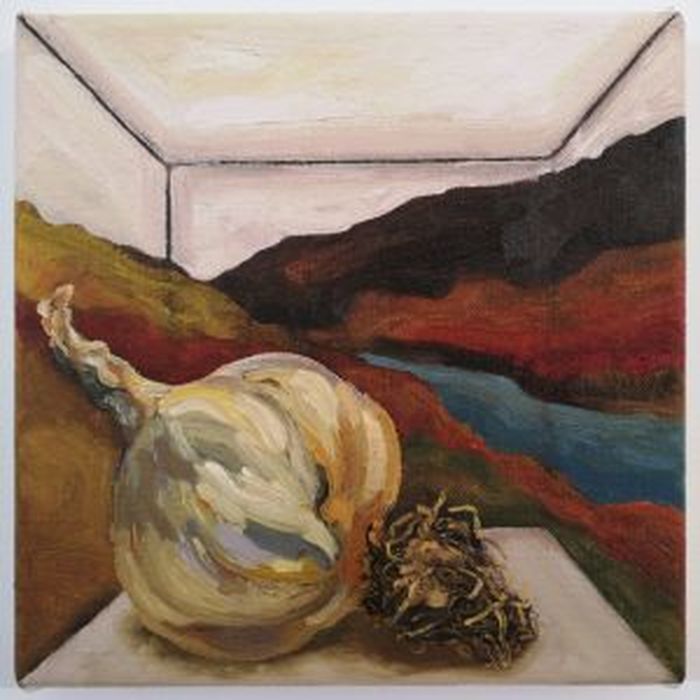David Hockney exhibition to open at the Fitzwilliam
The exhibition combines Hockney’s work, some of which has never been seen publicly, with the historic collection of the Fitzwilliam

The Fitzwilliam museum and the Heong Gallery at Downing are hosting an exhibition of David Hockney’s work from March 15th to August 29th. The exhibition, Hockney’s Eye: The Art and Technology of Depiction, is the first exhibition to “give serious scholarly scrutiny to Hockney’s ideas as well as his art.”
Featuring some works of Hockney that have never been exhibited publicly, such as his self portrait painted in November last year, the exhibition investigates ‘Hockney’s lifelong exploration of how the surface of a picture can convey what we actually see, radically questioning traditional ways of depicting space and optical perspective.’ It will juxtapose Hockney’s work with classics in the museum’s collection, including Vincent Van Gogh, Claude Monet, John Constable and Nicholas Poussin. Through these juxtapositions the exhibition hopes to explore some of the ideas Hockney explored in the 2001 book Secret Knowledge: Rediscovering the Lost Techniques of the Old Masters.

In the book it was controversially argued that the degree of accuracy attained in Western Art from the Renaissance onwards was primarily a result of optical instruments, such as the camera obscura, camera lucida, and curved mirrors, rather than developments in artistic technique. To illustrate Hockney’s continued fascination with the techniques of the Old Masters, there will be a selection of drawings Hockney created using the camera lucida. Examples of these historic optical devices have been provided by the Whipple Museum and the History of Science Museum at Oxford University.
“Hockney himself has continued the tradition of experimentation with optical devices”
Another example of how the exhibition intends to Hockney’s interaction with the artistic canon is his After Hobbema (Useful Knowledge), which will hang alongside Meindert Hobbema’s most famous work, The Avenue at Middelharnis, on loan from the National Gallery. Hockney himself has continued the tradition of experimentation with optical devices in his use of digital drawing, cameras and digital film. More recently still, Hockney experimented with drawing on an iPad over lockdown. Another iconoclastic feature of Hockney’s work which will be explored is his use of reverse perspective.

His criticism of both photography and linear ‘Renaissance’ perspective, with its lines receding to a single point, is that they are untrue to our real experience of the visual environment. Whereas many Old Masters used linear perspective, as when the painting leads the viewer to a single point in order to create the illusion of depth, recently Hockney has experimented with shifting perspectives. In a recent interview he claimed ‘Just chopping off the corners has done wonders for me.’
“Another iconoclastic feature of Hockney’s work which will be explored is his use of reverse perspective”
The exhibition, co-curated by Martin Gayford, Martin Kemp and Jane Munro, was brought to Cambridge upon the suggestion of Martin Kemp, alumnus of Downing College. Portraits of both Kemp and Gayford are featured in the show. The exhibition spread from the Heong Gallery, in Downing, to the Fitzwilliam in order to bring out Hockney’s engagement with the canon by using the museum’s historic collection.
Jane Munro, a co-curator of the exhibition, told Varsity that ’Insinuating Hockney’s work in telling interventions throughout Fitzwilliam’s picture galleries has allowed us to “stress-test” Hockney’s ideas on art in the context of a truly remarkable historic collection, inviting us to think again about modes of seeing and representing.
“As Hockney’s Eye shows, a museum’s collection may be permanent, but it is never static.”
 News / Cambridge student numbers fall amid nationwide decline14 April 2025
News / Cambridge student numbers fall amid nationwide decline14 April 2025 Comment / Cambridge’s tourism risks commodifying students18 April 2025
Comment / Cambridge’s tourism risks commodifying students18 April 2025 News / Greenwich House occupiers miss deadline to respond to University legal action15 April 2025
News / Greenwich House occupiers miss deadline to respond to University legal action15 April 2025 Comment / The Cambridge workload prioritises quantity over quality 16 April 2025
Comment / The Cambridge workload prioritises quantity over quality 16 April 2025 Sport / Cambridge celebrate clean sweep at Boat Race 202514 April 2025
Sport / Cambridge celebrate clean sweep at Boat Race 202514 April 2025





